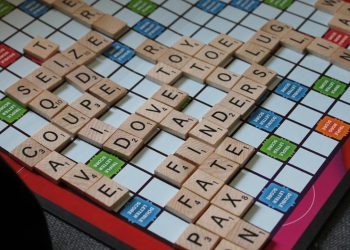Spelling puzzles are everywhere. Whether you are having a cup of coffee, sitting in a car stuck in a traffic jam, or getting ready to sleep, a word game is so much fun that it’s often impossible to resist. Crosswords and other word puzzles are not only entertaining; they provide each player’s satisfying moments that make them feel accomplished when they solve a challenging task. Have you considered how these puzzles are designed? What goes on within the mind of a puzzle maker?
As a word game developer, allow me to take you behind the steps. I will guide you through the process, from ideation to placing the finishing touches, and share the methods behind the addiction we lovingly crafting puzzles that will entice the users. After reading this article, you will understand the artistry in creating word games.
The Spark of Inspiration: Where Do Ideas for Puzzle Games Come From?
Developing an idea is the first step to creating a word game. Be it a casual glance or even a word that comes out of nowhere, inspiration has dedicated sources for every puzzle maker, themselves including popular culture. Sometimes, unique language structures and creative word patterns realized when reading books or during movies result in ‘eureka’ moments for the puzzle creators.
As an example, the concept for ‘stressed’ morphing into ‘desserts’ may give rise to anagram based puzzles. Utilization of the amalgamation of different meanings of the identical words can lead to cross puzzles.
Many other creators formulate their ideas based on the distinct yet mundane combinations of words such as “rainbow” and “sloth.” This example depicts how everyday activities are a source of inspiration. These imaginative collocations amuse players and make the puzzles laughable while also serving to spice up the gameplay.
The Mechanics: How to Make a Word Game Captivating
Why does a word game stand out? The game does not simply exist because of word rearrangement. As a puzzle maker, there is a multitude of factors alongside random word generation that require consideration. Parts of the game need to work together in order to form an enticing experience for the players. Every experience demands a unique approach. Here is something to consider:
1. The Difficulty Balance: In Between Too Hard or Too Easy
One of the core elements of game balance rests in determining the challenge of the game. While tough puzzles result in frustration, ranging difficulties may lead to contempt. The perfect mix of challenge in conjunction to strategy is necessary for increased player retention.
To keep players engaged, different stages of the game need to be divided into increasingly harder tasks. Users need to start on simpler word searches that progress into multi-step word finds. If difficulty increase is gradual, players will continue feeling challenged without ever feeling overwhelmed.
2. Pacing – Maintaining Gameplay Dynamic
As noted already in the Balance section, pacing refers to not over-stressing, or under-stimulating, the player. The challenge here lies in ensuring the game moves ahead and the player is not forced too much at every step.
In order not to turn the game into monotony, creators often mix difficulty levels within each stage’s puzzles. For example, after a complex puzzle, you may want to include an easy one to allow the player to relax a little before increasing the challenge again. This gives a natural pattern to gamers and keeps them attentive.
3. Reward Systems – Motivation to Sustain Participation
Rewards play a huge role in how addictive a word game is. Whether it’s points, new levels, or unlocking new challenges, rewards stimulate participation. After all, who would decline some praise?
In word games, players may earn unexpected rewards. For instance, users may earn bonus points for discovering some challenging words or word combinations. The enjoyment coming from such “wow” moments is what makes word games engaging.
The Art of Creating A Vocabulary Challenge: Word Selection
Every word puzzle has word intricacies. What requires the most attention in game design, however, is curation of the list of the words themselves. Constructing a puzzle is not just a simple task of compilation, but rather, aligning the nuance of words to fit the mechanics of the game, and at the same time, pose a challenge to the player.
A case in point is that of crosswords. The specific words selected also have to work together narratively. And don’t forget to keep track of word difficulty. Too many obscure and frankly uncommon words, and the puzzle will be overly complicated. The opposite renders the game trivial.
Usually, I aim for specific themes, creating a list of potential answers that need to be filled with the challenge provided by the subject of the game. Such as, focusing on synonyms for synonym puzzles, long words and short ones for searching. It’s all about having words that are relatively easy to understand, but can make one work a little harder for it.
Testing and Tweaking: Why Playtesting Is Key
We can now proceed to the playtesting stage after completing the design phase. This is one of the most vital steps in creating a puzzle. You want to see how players are engaging with the game, whether they are having fun, or getting bored and frustrated.
My final tests include players who are new to word games as well as avid word game players. This ensures that the game will not be too hard or easy. I then adjust the game to ensure every player has a properly paced experience with the right amount of rewards.
Every playtest helps with polishing the game. As an example, is the timer set too fast? Do the hints provided offer an adequate amount of assistance? Testing polish helps ensure the game is fun and works smoothly before releasing it to the players.
Creating Emotional Impact: More Than Just a Challenge
Something that makes a word puzzle enjoyable is the emotional effect the game has on the player. Players need to be compelled by the ability to solve captivating phrases, the excitement when searching for critical words, and the joy of completing challenges. This ensures they remain glued to the game.
I am a game puzzle designer, and it is my responsibility to create games my players feel achieved when they finish them. The players solving puzzles adds to the excitement, and that is the positive feeling they keep wishing to experience. The sense of accomplishment motivates them.
Conclusive Insights
Always remember, this is an extremely interesting project of designing a word game. Like with any scientific study it will require some creativity, planning, and proper knowledge of human psychology. Engaging one’s creativity means providing challenges, entertainment, and fun. This means that as game creators, all of us are required to invent every word, puzzle, and challenge in a way that the player achieves success, but without having them to go through much struggle to solve the puzzle presented.
In case some of you are willing to have their word skills sharpened a bit, I can suggest they take a shot at my game, Puzzle Jam. Nothing can be easier than these fun yet challenging games whether for amateurs or experienced champions of puzzles. So can you put your reasoning skills into use? Make your attempt now and let’s see how many words you can spot. Wishing you the best in puzzling.














